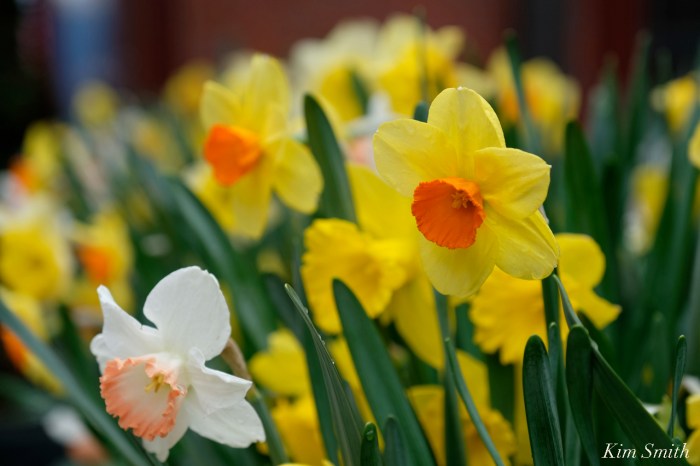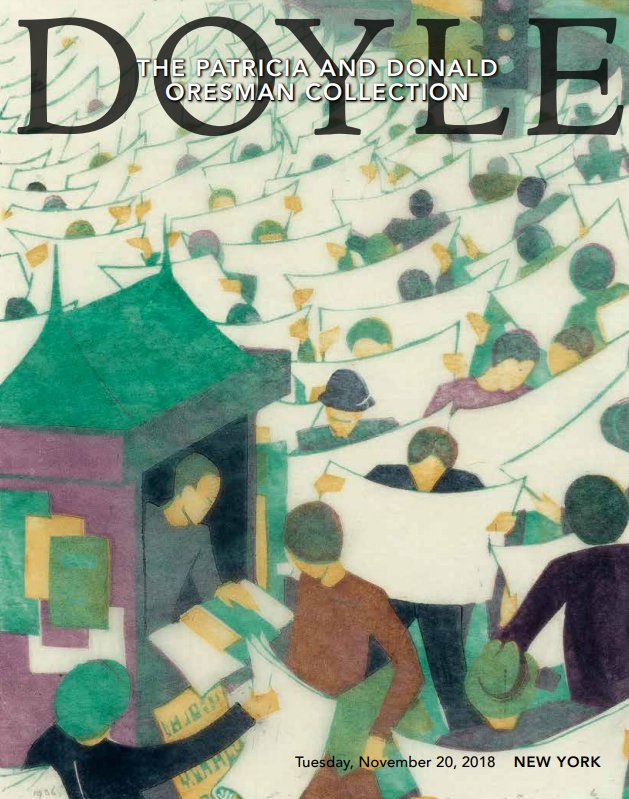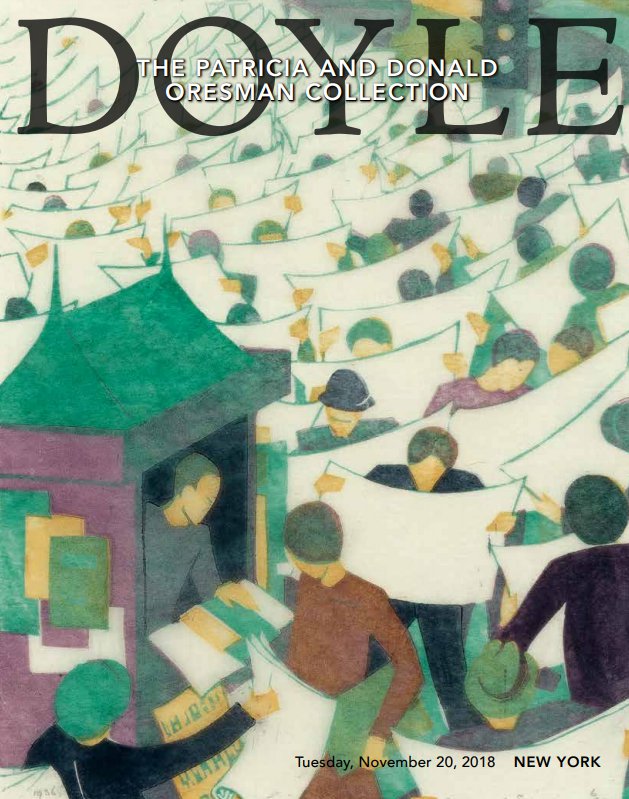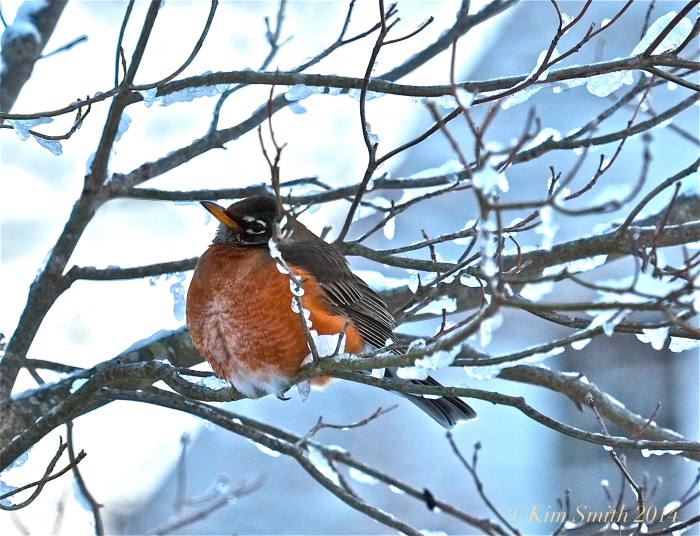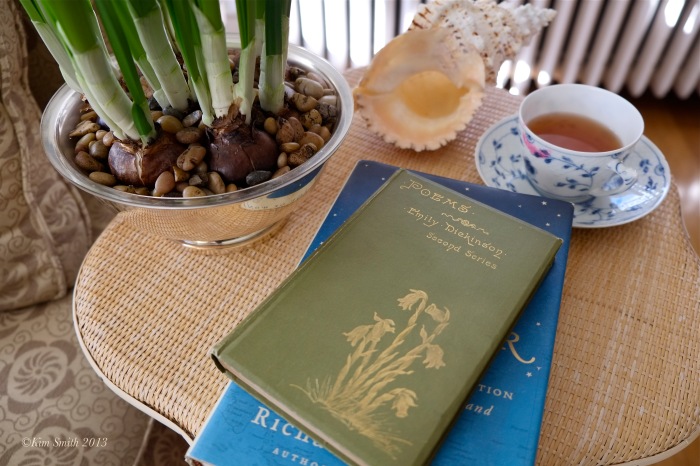 The male Eastern Bluebird shows a brilliant indigo blue on the head and back, with a rusty reddish brown breast. The female is more softly colored overall, with elegant gray wings, tinged in shades of blue, and paler breast.
The male Eastern Bluebird shows a brilliant indigo blue on the head and back, with a rusty reddish brown breast. The female is more softly colored overall, with elegant gray wings, tinged in shades of blue, and paler breast.
Eastern Bluebird (Sialia sialis)
Several days ago Joey captured (with camera) a pair of Eastern Bluebirds. Everyone who responded in the comment section spoke so fondly of this beautiful bird that I thought we’d all enjoy knowing a bit more about its current status in Massachusetts. And too, sightings at this time of year give reason to share a favorite Emily Dickinson poem—“Before you thought of spring, except as a surmise…”
Before you thought of spring,
Except as a surmise,
You see, God bless his suddenness,
A fellow in the skies
Of independent hues,
A little weather-worn,
Inspiriting habiliments
Of indigo and brown.
With specimens of song,
As if for you to choose,
Discretion in the interval,
With gay delays he goes
To some superior tree
Without a single leaf,
And shouts for joy to nobody
But his seraphic self!
Bluebirds do indeed appear to sing with great joy from the treetops, and reading this poem always makes me smile, thinking about “a fellow in the skies” singing to nobody but his rapt self. As is so typical of her work, Emily Dickinson’s poem is an astute and honest observation of the natural world, but I also interpret her poem to mean that joy is an emotion that doesn’t need an audience; that it can be expressed for the sake of joy itself.
*
Eastern Bluebirds sing several types of songs; one is a liquid birdsong—sort of a turee song—and another is a soft melodious warble. When trying to attract a mate, unpaired males typically sing from a high perch, and sometimes even in flight. Both male and female sing in all seasons to keep in touch with each other and to signal to nestlings that food is on its way. Bluebirds are in the Thrush Family, as are American Robins, and Robins too sing a lovely liquid birdsong.
From the Mass Audubon State of Birds:
“The very widespread breeding distribution seen in the Eastern Bluebird in Massachusetts today is, in large part, the result of considerable support received by concerned citizens who, for more than half a century, erected large numbers of nest boxes across the state and helped save the species from near-extirpation.”
What does “extirpation” mean? Not that a species has become extinct from our planet, but that it is no longer found in a particular area. We are very fortunate that the Eastern Bluebird did not become extirpated from our region. Bluebirds are cavity nesters and use suitable bird boxes, tree cavities, and old woodpecker holes in trees and fence posts to build their nests. During the era when settlers cleared forests and planted fields and orchards, the Eastern Bluebird became quite common. In the 20th century their population decreased by nearly 90 percent for several reasons, two of which are because vast areas of New England are reverting to forest, and because the bluebird is competing for nesting sites with the alien European House Sparrow and European Starling. The return of the Eastern Bluebird during the spring and summer breeding period is due in large measure to citizens throughout the state building and placing nest boxes along “bluebird trails.”
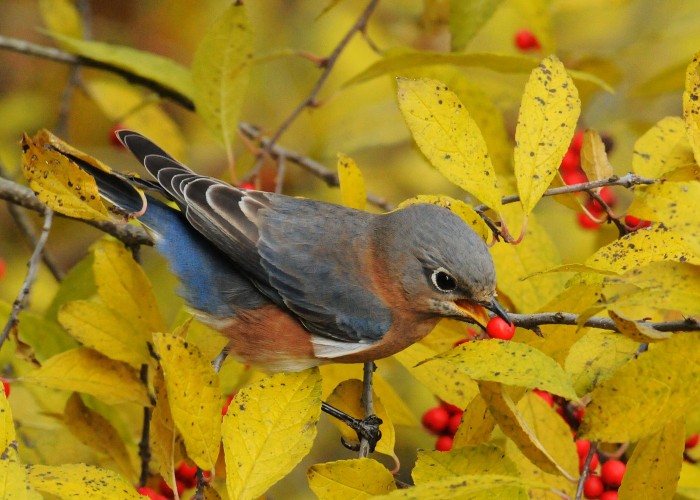
Eastern Bluebird and Winterberry
If you are fortunate enough to have bluebirds visiting your backyard, you may want to provide them with supplemental food. Bluebirds are primarily insectivores. They do not visit bird feeders because their bills are not designed for cracking open seed and nut shells (but they will eat hulled sunflower seeds). They eat berries at this time of year because there aren’t any insects. The winterberries won’t last long on the bush with flocks of hungry birds descending to your garden. Mealworms (which aren’t really worms at all, but are the larval form of the darling beetle) are the most nutritious supplement you can provide bluebirds. For more information on feeding mealworms to bluebirds go to this fact sheet: North American Bluebird Society’s Mealworms Fact Sheet.
For a wonderful FREE downloadable 15 page education packet designed for grades 1-5, with coloring pages and puzzles follow this link: Education Packet
For more information on how to build, and where to site, bluebird nest boxes, along with plan drawings, follow this link: Getting Started with Bluebirds
To read more about the devastating effects of European House Sparrows and European Starlings follow this link: House Sparrow Control.
*
Just this past week, 15 Eastern Bluebirds were spotted at Allens Neck Wildlife Sanctuary in Westport, Massachusetts. See tomorrow’s post for information about an upcoming Bluebird Nestbox Walk at Allens Neck.
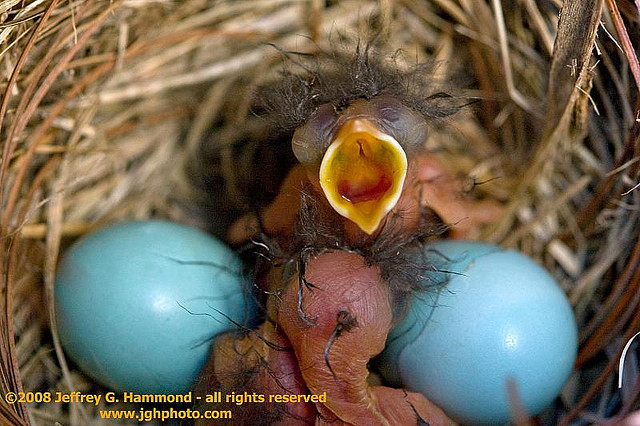
Additional images courtesy Google image search.
Spread The GMG Love By Sharing With These Buttons:
